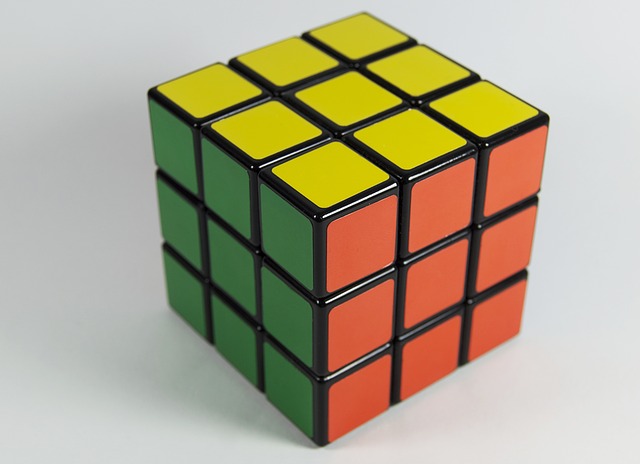
Studying for and planning to take the GMAT can be a confusing process. No wonder you have questions!
We’ll answer all the key GMAT FAQs right here, covering a wide range of issues such as logistics; content, planning, and preparation; format and delivery; scores; and business school admissions.
Article Roadmap: GMAT FAQs
- GMAT Logistics
- GMAT Content, Planning, and Preparation
- GMAT Format and Delivery
- GMAT Scores
- Business School Admissions
GMAT FAQ: Logistics
These GMAT FAQs address the basics of taking the GMAT, including costs, scheduling, and registration.
#1: How Do I Register for the GMAT?
You can register for the GMAT at mba.com (the official GMAT website). After you create an account, you can select your testing date, time, and location by clicking on “Register for the GMAT” under “The GMAT Exam” on the main page.
Not sure how or what to study? Confused by how to improve your score in the shortest time possible? We've created the only Online GMAT Prep Program that identifies your strengths and weaknesses, customizes a study plan, coaches you through lessons and quizzes, and adapts your study plan as you improve.
We believe PrepScholar GMAT is the best GMAT prep program available, especially if you find it hard to organize your study schedule and don't want to spend a ton of money on the other companies' one-size-fits-all study plans.

You can also register by phone by calling GMAT Customer Service. Keep in mind that there’s a $10 phone service fee.
#2: How Much Does the GMAT Cost?
Scheduling a GMAT appointment costs $250. You can pay for your GMAT registration with credit or debit card, money order, cashier’s check, or personal check.
GMAT vouchers (which allow students who can demonstrate financial need to take a test for free) are not available through the Graduate Management Admissions Council (GMAC), but you can find them through external organizations like the Edmund S. Muskie Graduate Fellowship Program and the Fulbright Foundation.
#3: How Often Can I Take the GMAT?
You can take the GMAT up to five times every 12 months.
You can’t take the GMAT more than once in a 16-day period, or more than eight times total.
#4: Can I Reschedule a GMAT Appointment?
You can reschedule by logging into your personal GMAT account at mba.com, but there’s a fee. If you reschedule your exam more than seven days before your appointment, it’ll cost you $50; if you reschedule seven days or fewer before your GMAT appointment, there’s a $250 fee.
You can’t reschedule or cancel the GMAT 24 hours or less before your exam appointment. Find more information about rescheduling the GMAT here.
#5: Can I Retake the GMAT?
You can take the GMAT up to five times every 12 months.
About a third of students retake the GMAT, and business schools don’t look down on it, especially if your score improves with each retake. About 10% of applicants have taken the GMAT three or more times.

GMAT FAQ: Content, Planning, and Preparation
These GMAT FAQs address what skills and concepts are tested on the GMAT, as well as how to best prepare for the exam.
#6: What Material Is Tested on the GMAT?
The analytical writing assessment includes a 30-minute essay prompt that tests your ability to analyze a given argument and communicate effectively in standard English. It includes one analysis of an argument question, which will ask you to unpack and critique a given argument in essay format.
The integrated reasoning section asks you to synthesize and analyze information presented in different formats (such as text, graphics, and charts) and from different sources and to solve problems based on complex information that has to be integrated. It includes graphics interpretation, two-part analysis, table analysis, and multi-source reasoning questions.
The quantitative section tests your skills in secondary school-level math, as well as your ability to analyze and solve numerical problems, evaluate graphs, and determine whether or not you have enough available data to answer a given question. It includes problem solving and data sufficiency questions.
The verbal section tests your ability to apply logical reasoning to analyze arguments, implement grammar rules, and understand complex reading passages. Overall, the section tests your ability to read, write, and reason in written standard English. It includes reading comprehension, sentence correction, and critical reasoning questions.
#7: How Should I Prepare for the GMAT?
Take an initial practice test with the GMATPrep Software to gauge your current level.
Next, to improve your score, target your weaknesses. Determine your weak spots by section and by question type. You should devote study time to every section, but you should spend the highest number of prep hours on the areas in which you struggle.
Want to improve your GMAT score by 60 points?
We have the industry's leading GMAT prep program. Built by Harvard, MIT, Stanford, and Wharton alumni and GMAT 99th percentile scorers, the program learns your strengths and weaknesses and customizes a curriculum so you get the most effective prep possible.

Your prep time should be divided between practice tests (using computerized adaptive practice exams whenever possible), sets of practice questions, reading test-taking strategies, and drills of particular skills. In addition, a review of basic math concepts and the rules of English grammar should be incorporated into your study plan. Find out more about preparing for the GMAT here.
#8: Where Can I Find Prep Material for the GMAT?
The best source of GMAT prep material is the Official GMATPrep Software, which you can download with an account at mba.com. It includes two full-length computerized adaptive practice GMATs, practice questions, and a math review. Other official practice materials include [links] the GMATPrep Exam Collection and Question Pack, the Integrated Reasoning Prep Tool, GMAT Write (which will help with the analytical writing assessment), and the GMAT Focus Online Quantitative Diagnostic Tool.
Find out more about GMAT prep materials here.
#9: How Long Should I Study for the GMAT?
Obviously the amount of time you spend studying depends on your current skill level, your target score, and your particular circumstances. However, a good rule of thumb is to prepare for at least three months before taking the GMAT if you want to improve your score by a modest amount—say, 30-50 points. This assumes that you are studying regularly throughout the week (approximately 10 hours a week).
If you need a more substantial boost in your score, it’s best to plan for six months of regular study if you can. This will ensure that you are familiar not only with the concepts tested on the GMAT, but with the nuances of the exam and the format as well, and that you have ample time to target your weaknesses.
#10: What Math Is on the GMAT?
The quant section tests basic math concepts in the areas of algebra, geometry, and arithmetic.
The GMAT quant section is divided into problem-solving questions and data sufficiency questions. Data sufficiency questions will ask you whether, given a question and two statements containing data, whether the data in the two statements are enough, or ‘sufficient,’ for answering the question.
Since you won’t have a calculator on the quant section, it’s also important to practice doing calculations in your head as part of your GMAT prep.

GMAT FAQ: Format and Delivery
The answers to these GMAT FAQs will go over what the GMAT will look like, how it will be delivered, and what to expect on the day of the exam.
#11: What Is the GMAT Format?
The GMAT consists of four separately scored sections. Let’s take a look at them.
| Section | # of Questions | Time | Question Types | Score Range |
| Analytical Writing Assessment (AWA) | 1 Topic | 30 minutes | Analysis of Argument | 0-6 (in .5 increments) |
|
Integrated Reasoning (IR)
|
12 Questions
|
30 minutes
|
Multi-Source Reasoning; Graphics Interpretation; Two-Part Analysis; Table Analysis
|
1-8
|
|
Optional Break
|
8 minutes
|
|||
|
Quantitative Section
|
31 Questions
|
62 minutes
|
Data Sufficiency; Problem Solving
|
200-800
|
|
Optional Break
|
8 minutes
|
|||
|
Verbal Section
|
36 Questions
|
65 minutes
|
Reading Comprehension; Critical Reasoning; Sentence Correction
|
200-800
|
As of July 2017, you can select the order in which you complete the sections of the GMAT. Find out more about this change here.
The analytical writing assessment requires you to complete an essay using a basic text editor.
The multiple-choice integrated reasoning section contains questions with multiple parts, all of which you’ll have to answer in order for your response to be marked as “correct.”
The multiple-choice quantitative section consists of data sufficiency questions, which ask you to decide whether given data would be sufficient to answer a question or solve an equation, and problem-solving questions (word problems).
Want to Identify YOUR GMAT Strengths and Weaknesses?
Our proprietary GMAT Diagnostic Assessment creates a customized study plan for you that takes you from registration all the way to test day! It is included with every account and proven to significantly maximize your score.
Get your personalized assessment as part of your 5 day risk-free trial now:

The multiple-choice verbal section consists of reading comprehension questions with both short (about 200 words) and long (300-400 word) passages, critical reasoning (logic) questions, and sentence correction (grammar) questions.
The verbal and quantitative sections of the GMAT are always delivered in computerized adaptive format. All sections of the GMAT are completed on a computer. No paper GMAT is available.
#12: How Long Is the GMAT?
In total, the GMAT takes about 3.5 hours to complete (including breaks). The analytical writing assessment is 30 minutes long, and the integrated reasoning section is 30 minutes. The quantitative section takes 62 minutes, and the verbal section takes 65 minutes.
There are two optional eight-minute breaks during the test.
#13: What Is a Computerized Adaptive Test (CAT)?
A computerized adaptive test adjusts to your skill level in real time as you take the GMAT. A computerized algorithm will determine the difficulty level of the questions you will receive, and your score, based on your answers.
You will begin the exam with questions of medium difficulty. If you complete “medium” questions correctly, you will receive more difficult questions. If you complete ‘medium’ questions incorrectly, you will receive easier questions. Your score will be determined not only by how many questions you answer correctly or incorrectly, but by how many questions of each difficulty level you answer correctly.
#14: Can I Use a Calculator on the GMAT?
You will have access to an onscreen calculator with basic functions during the integrated reasoning section. You will not have access to a calculator on the quantitative section, but don’t worry: You will not be asked to complete detailed or exact calculations for quant questions.
#15: Will I Get Scratch Paper on the GMAT?
Yes, you will get a double-sided, laminated scratch pad the size of a standard legal pad to use during the GMAT. You can write on the scratch pad with non-permanent markers that will be provided to you on the day of the test. You can ask the proctor for a new scratch pad at any time during the exam.
You can practice with Manhattan Prep’s simulation GMAT scratch pad while you take practice tests at home.

GMAT FAQ: Scores
In these GMAT FAQs, we’ll go over how the GMAT is scored, what your score means, and how long it will take to receive your score reports.
#16: How Is the GMAT Scored?
The four sections of the GMAT are scored separately. Your total score, between 200 and 800 (what people are generally referring to when they say “GMAT score”) reflects the combination of your verbal and quant scores. You will also receive individual verbal and quantitative scores between 0 and 60. On the integrated reasoning section, you’ll receive a score from 1-8.
The analytical writing assessment is scored by two graders. You’ll receive a score from 0-6 in half-point increments. Find out more about how the GMAT is scored here.
#17: What’s a Good GMAT Score?
While the average GMAT score is usually around 550, you’ll need a 600 or over to get into most top 50 business schools. For top 10 schools, a 700+ score is expected of most incoming students. At particularly elite programs like Harvard or Stanford, you’ll usually need a score of 720 or higher to be admitted.
What matters most is that your GMAT score gets you into the business school of your choice. To find the average GMAT score of the most recent incoming students at your MBA programs of choice, check out the most recent class profile at each of your prospective schools. Find out more about how to find out if your score will get you into your favorite business school here.
#18: What’s the Average GMAT Score?
The average GMAT score for all test-takers is 551.94. The average score on the analytical writing assessment is 4.37; on the integrated reasoning section, it’s 4.23.
The average verbal score is 26.8, and the average quant score is 38.91.
Remember that average scores aren’t a good barometer of where your score should land in order for you to get into an MBA program. Competitive business schools will expect scores much higher than the average.
#19: How Long Does It Take to Get GMAT Scores?
You’ll get an unofficial score report for every section except the analytical writing assessment at the testing location immediately after you take your exam. You’ll receive an official score report approximately 20 days after you take the GMAT.
You will be able to choose five schools to send your scores to before you take the exam. Those schools will receive your official score report approximately 20 days after your GMAT appointment. Additional score reports, which can be ordered online, cost $28 each and will be sent to the schools you select within a week.

GMAT FAQ: Applying to Business School
These FAQ address how your GMAT scores will affect your chances in the MBA admissions process.
#20: Do I Need to Take The GMAT for Business School?
A few business schools don’t require the GMAT. In particular, executive MBA programs—accelerated, advanced programs designed for working professionals or students with extensive relevant work experience—often accept GMAT waivers if you can demonstrate a certain number of years of work experience, success in former leadership roles, and/or a record of high academic achievement.
#21: What GMAT Score Do I Need to Get Into Business School?
At top 10 business schools, average GMAT scores of incoming students are above 700. A score of 720 or over will help you stand out among your peers in the admissions process.
At mid-ranking programs, a GMAT score of 600 or over is a fairly safe bet.
To find out more about the average GMAT scores at your prospective business schools, check out the class profiles of the most recent incoming class at each of your chosen MBA programs. Find out more about what GMAT score you’ll need to get into an MBA program here.
#22: Can I Get Into an MBA program With a Low GMAT Score?
There’s no cutoff GMAT score below which you absolutely can’t get into an MBA program.
Some students with lower scores are admitted to high-ranking MBA programs, but they are outliers. Usually, if a student with a lower score is admitted, he or she has an especially impressive work history or some especially exceptional achievement, such as awards or special recognition.

GMAT FAQ: Takeaways
In the GMAT FAQ, we’ve covered many common questions related to the GMAT, including logistics, content and preparation, format and delivery, scores, and MBA admissions. Hopefully we’ve helped you cut to the chase so that you understand the nuts and bolts of the GMAT and feel ready to prepare for the test.
What’s Next?
Choosing a 2017 GMAT test date? Our expert guide will help you.
Now that you know the basics about the GMAT, look up the most common GMAT mistakes and how to avoid them here.
To learn more about the relative difficulty of the exam, check out How Hard is the GMAT?
 PrepScholar GMAT
PrepScholar GMAT